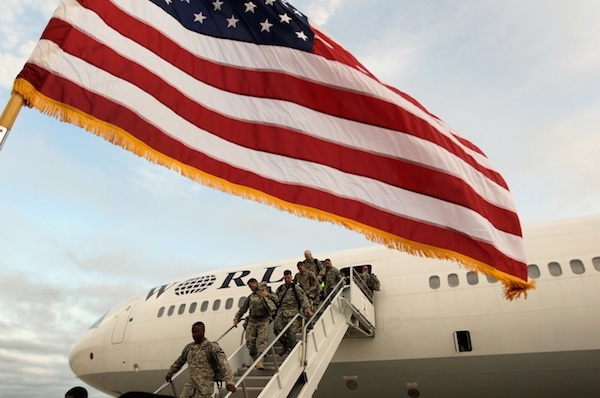The US invasion of Iraq in 2003 was an act of frivolity without parallel in United States history. The destruction of the Baathist state caused Iraqis to flee into their ancient sectarian and racial communities, and laid out a killing-ground where animosities suppressed in other Muslim countries could be fought out to the last Iraqi. By early 2006, when Sunni extremists (usually called al-Qa’eda) blew up the holy Shia mosque in Samarra, the country was in civil war.
The United States kept its nerve. With the dogged support of President George W. Bush in Washington, five additional fighting brigades and uncounted tons of reinforced concrete, Generals David H. Petraeus and Raymond T. Odierno separated and broke up the insurgents, stabilised the country, warned off the Iranians and retrieved the honour of the United States armed forces. The Endgame, a long book by two New York Times writers, tells the story in great detail, from White House conferences to a single tank firing canister-shot down the alleys of Baqubah to cut the cat’s cradle of wires linked to buried bombs and booby-trapped houses.
British readers will contrast the vigour and grit of the US forces with the inaction of the British contingent in the south of the country, which withdrew from Basra till it was shamed back into the town in early 2008 by the chaotic Iraqi army action known as ‘the Charge of the Knights’ (soulat al-forsan in Arabic).
In invading Iraq, the Bush administration imagined it could remove Saddam Hussein and the most repellent of his Baathi friends, but leave the 80-year-old state intact. When that state disintegrated, a succession of proconsuls tried to rebuild government, army and police from the ground up. Yet the training missions and development programmes merely reinforced the Shia cliques and drove the terrified Sunni minority into the arms of al-Qa’eda. In the hospitals, Sunni patients were slaughtered in the operating surgeries and some ministries were so overrun by Shia factions that US officers visited the latrines, like schoolgirls, in pairs. It was time, as Petraeus put it in one of his weekly letters to defense secretary Robert Gates, to move ‘from nation-building back to war-fighting’.
By the fortunes of war, the ‘surge’ or five-brigade reinforcement in Baghdad in 2007 coincided with attempts by enterprising officers, beginning in the western province of Anbar, to win over Sunni rebels disgusted by the extremism of al-Qae’da and its foreign fighters. The surge carried the so-called Anbar Awakening (sahwat al-anbar) into Baghdad and the towns around it, where al-Qa’eda built and assembled its colossal underground and vehicle-borne bombs. As the new brigades pushed into the ‘Baghdad Belts’, they clashed with the Shia militias, notably the Mahdi Army (jaish al-Mahdi or JAM) of Moqtada al-Sadr, scion of a famous clerical family with a taste for kingmaking. A furious Prime Minister Maliki called some US field officers ‘more Sunni than the Sunnis’.
Yet as the US increased its forces in Iraq to 20 brigades, Britain withdrew from Basra. Under a deal with the Sadrists devised by division headquarters and SIS, the British in 2007 retired from their last base in the city to Basra airport where they came under regular mortar and rocket fire. The city descended into gangsterism. When on 25 March 2008, Prime Minister Maliki flew down to Basra and launched the ‘Charge of the Knights’ to clear out the Sadrists, the British division commander was skiing in Switzerland. The British-mentored division collapsed. With General Mohan, the Iraqi commander, directing the battle from a headquarters consisting of himself and eight mobile phones, and Maliki refusing to have British officers in the room, Petraeus had to rush reinforcements south. Moqtada asked for a ceasefire.
For this inglorious passage of British arms, Gordon and Trainor place the blame on the timid Blair and Brown governments. They quote a US officer to this effect: ‘Whitehall was in tactical command of the British forces in Basra.’ They cannot resist saying that while the British bragged of their experience in counterinsurgency in Northern Ireland and elsewhere, the Americans gave their field officers cash and authority to forge the local alliances that broke the insurgency.
By then, the focus of US attention had shifted: first to Afghanistan, then to Iran’s nuclear programme. It appears from this account that Obama always thought of Iraq as his predecessor’s war and, even before his first inaugural, was determined to withdraw and shift resources to Afghanistan as ‘the central front in the war on terror’. (Those last three words have done more to injure US interests than all the terrorists combined.)
As for Iran, its wishes converged with those of the US in supporting the Maliki premiership. As an Iraqi politician put it, ‘the Axis of Evil and the Great Satan’ were backing the same candidate. We learn here that General Suleimani, commander of the special forces of the Corps of Iranian Revolutionary Guards, sought a meeting with Petraeus but was rebuffed because of their difference in rank. (Suleimani is a mere two-star general or the equivalent of a British major-general.)
By insisting on cast-iron immunities for US forces in Iraq, Obama ended up with nothing and all US forces left the country just before Christmas last year. That included all military aviation. As a result, Iran has made an air bridge over Iraq to supply the beleaguered government forces in Syria. It has been a thin harvest from all the blood and money expended by the United States. But for its officers and fighting men and women, it could have been nothing at all.






Comments